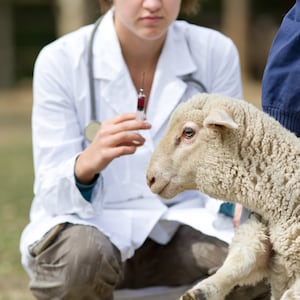World
Exploring Veterinary Services of the 1930s and 1940s

The veterinary profession in the 1930s and 1940s was marked by significant challenges and remarkable dedication. According to historical accounts, veterinarians during this period not only faced a shortage of resources but also had to navigate a landscape that required resilience, creativity, and a profound connection to both animals and the land.
Veterinarians primarily treated large animals, including cattle, horses, and pigs. Their work was physically demanding, often requiring extensive travel to reach remote farms. Many veterinarians relied on horseback or bicycles for transportation, and while some had access to automobiles, this was not the norm. The lack of readily available antibiotics, such as penicillin—which gained popularity in the 1940s—meant that treating infections posed considerable difficulties.
Challenges Faced by Veterinarians
During the 1930s and 1940s, veterinarians encountered numerous obstacles that shaped their practice. The profession was still in its developmental stages, with limited educational opportunities and a lack of formalized training programs. As a result, many aspiring veterinarians learned through hands-on experience, often working alongside more seasoned professionals.
The physical demands of the job were compounded by the harsh realities of rural life. For instance, transportation challenges meant that veterinarians often had to carry their equipment over long distances. This not only tested their stamina but also their ingenuity. They had to come prepared for a range of situations, from routine check-ups to emergency interventions, often without the benefit of modern technology.
Despite these challenges, the rewards of veterinary work were significant. The bond between veterinarians and the animals they treated was strong, and many practitioners found satisfaction in helping farmers maintain the health of their livestock. The role of a veterinarian extended beyond medical care; it often included providing farmers with advice on animal husbandry and general farm management.
The Evolution of Veterinary Education
As the 1940s progressed, the veterinary field began to evolve. The introduction of antibiotics like penicillin marked a turning point in animal healthcare, significantly improving treatment outcomes for infections. This advancement, along with a growing awareness of the importance of animal welfare, prompted changes in veterinary education.
Veterinary schools began to expand their curricula, incorporating more comprehensive training in both medicine and surgery. Scholarships and funding opportunities started to emerge, designed to encourage more individuals to enter the profession. These changes laid the groundwork for a more robust veterinary community, equipped to meet the needs of both farmers and animals.
In summary, the veterinary landscape of the 1930s and 1940s was defined by perseverance and innovation. As veterinarians navigated the challenges of their time, they forged strong connections with the agricultural community, ultimately contributing to the evolution of veterinary services. The lessons learned during this period continue to resonate in the profession today.
-

 World4 months ago
World4 months agoTest Your Knowledge: Take the Herald’s Afternoon Quiz Today
-

 Sports4 months ago
Sports4 months agoPM Faces Backlash from Fans During Netball Trophy Ceremony
-

 Lifestyle4 months ago
Lifestyle4 months agoDunedin Designers Win Top Award at Hokonui Fashion Event
-

 Entertainment4 months ago
Entertainment4 months agoExperience the Excitement of ‘Chief of War’ in Oʻahu
-

 Sports4 months ago
Sports4 months agoLiam Lawson Launches New Era for Racing Bulls with Strong Start
-

 World5 months ago
World5 months agoCoalition Forms to Preserve Māori Wards in Hawke’s Bay
-

 Health4 months ago
Health4 months agoWalking Faster Offers Major Health Benefits for Older Adults
-

 Lifestyle4 months ago
Lifestyle4 months agoDisney Fan Reveals Dress Code Tips for Park Visitors
-

 Politics4 months ago
Politics4 months agoScots Rally with Humor and Music to Protest Trump’s Visit
-

 Top Stories5 months ago
Top Stories5 months agoUK and India Finalize Trade Deal to Boost Economic Ties
-

 Health2 months ago
Health2 months agoRadio Host Jay-Jay Feeney’s Partner Secures Visa to Stay in NZ
-

 World5 months ago
World5 months agoHuntly Begins Water Pipe Flushing to Resolve Brown Water Issue









